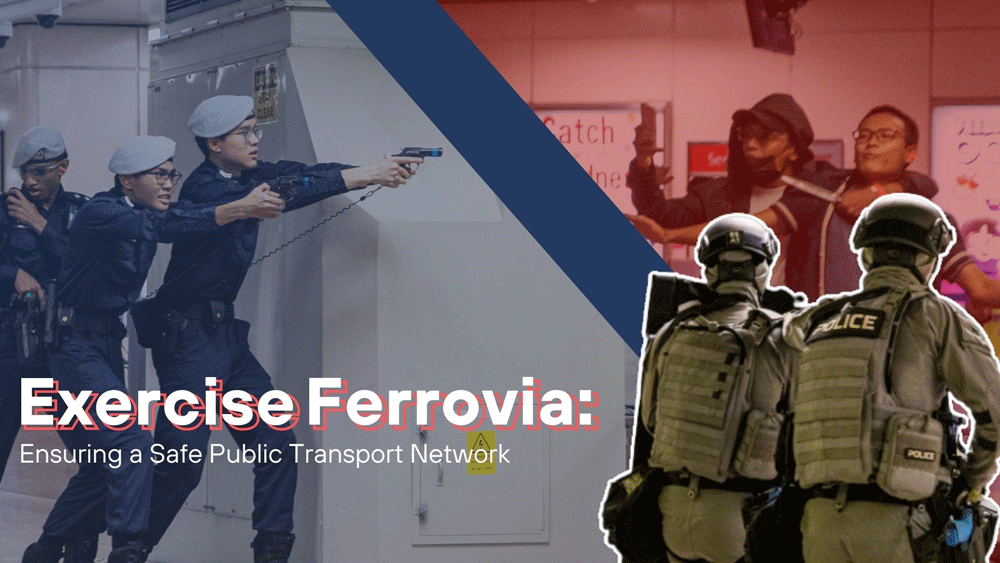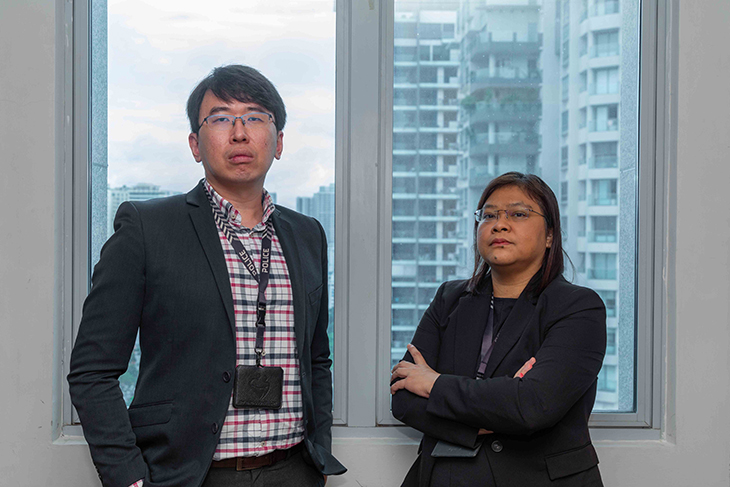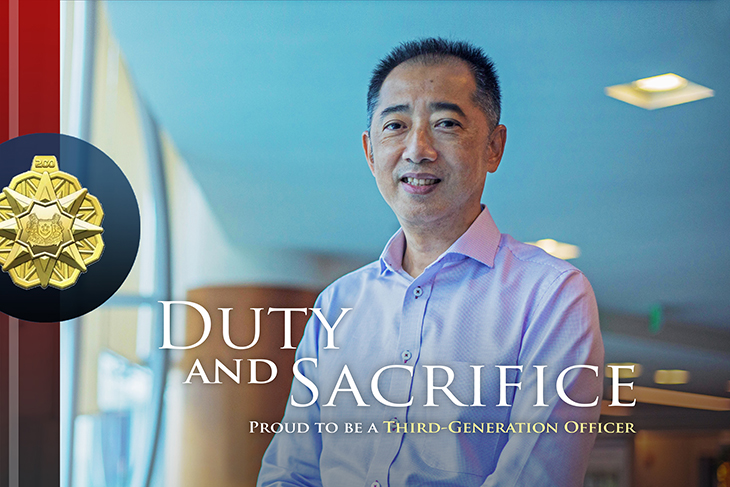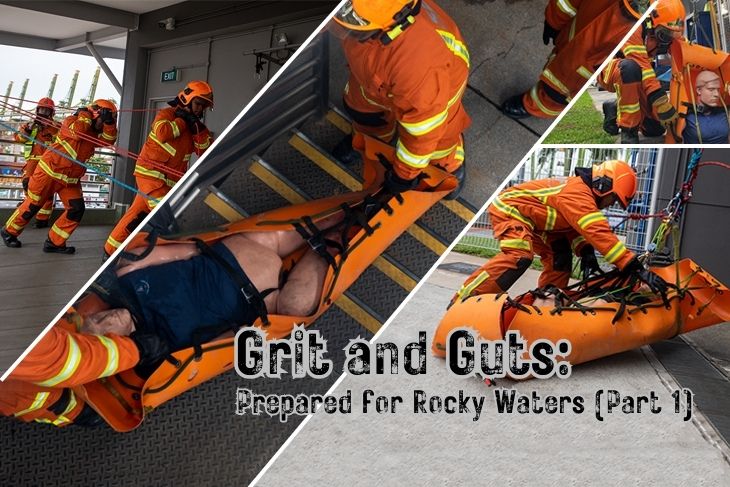
PHOTOS: Joash Tan, Phoebe Leow, SCDF. GRAPHIC: Arvind Chan
Rescuing casualties aboard a distressed vessel at sea brings with it a unique set of challenges. On board ships, officers from the Singapore Civil Defence Force (SCDF) sometimes have limited space to manoeuvre, depending on where the casualties are located on the vessel.
There’s also the rough, choppy seas to contend with, which requires close coordination between SCDF’s rescue vessel and the distressed vessel.
This is why Marine officers are highly trained, as there is very little margin for error. We tagged along with officers from West Coast Marine Fire Station to observe how their trainings are carried out during two of their drills.
Confined Space Drill
If a casualty is hurt or unconscious in a confined space in a vessel, the SCDF officers have a specific set of protocols to evacuate the casualty in a safe manner.
During the drill on land, officers used a drain to simulate a confined space of a ship, such as an engine room below the deck level. Typically, four officers are required to conduct such a rescue operation.
Firstly, a tripod and pulley system were set up “on deck” for extrication of the casualty.
Donning their breathing apparatus, two officers descended to the confined space to locate the casualty. After securing the casualty to a stretcher specially used for confined space rescue, the stretcher was secured to the main line attached to the pulley system, so that officers on the surface could lift the casualty up.
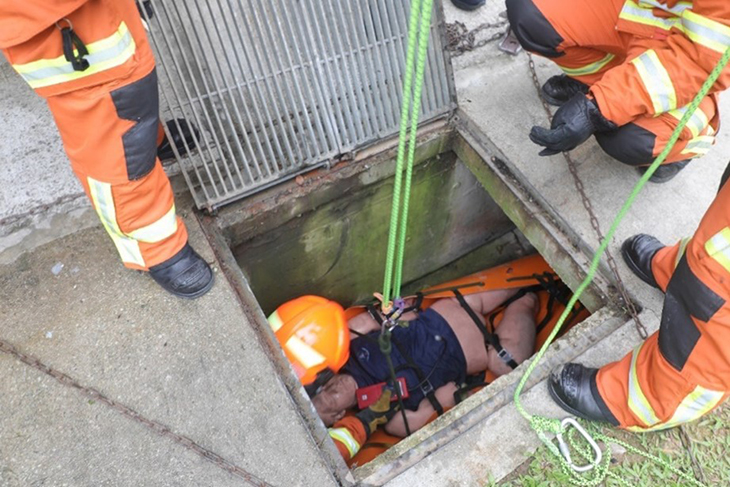
An officer securing the casualty in the confined space. PHOTO: Phoebe Leow
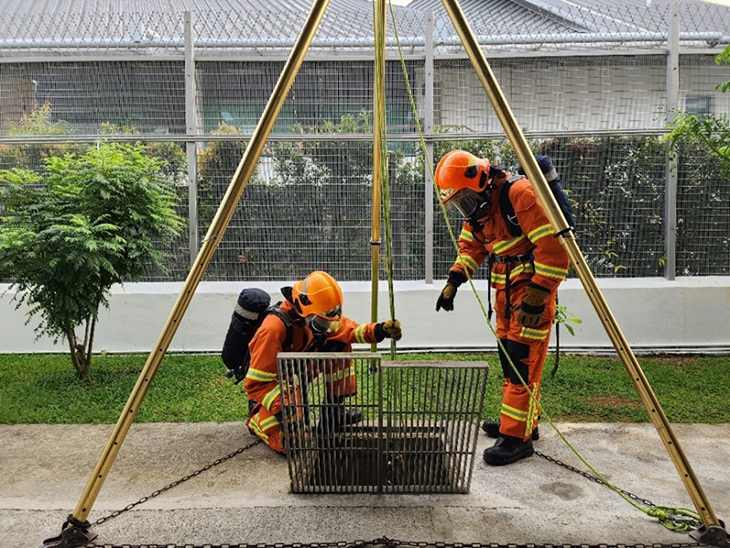
Officers on standby to extract the casualty. PHOTO: SCDF
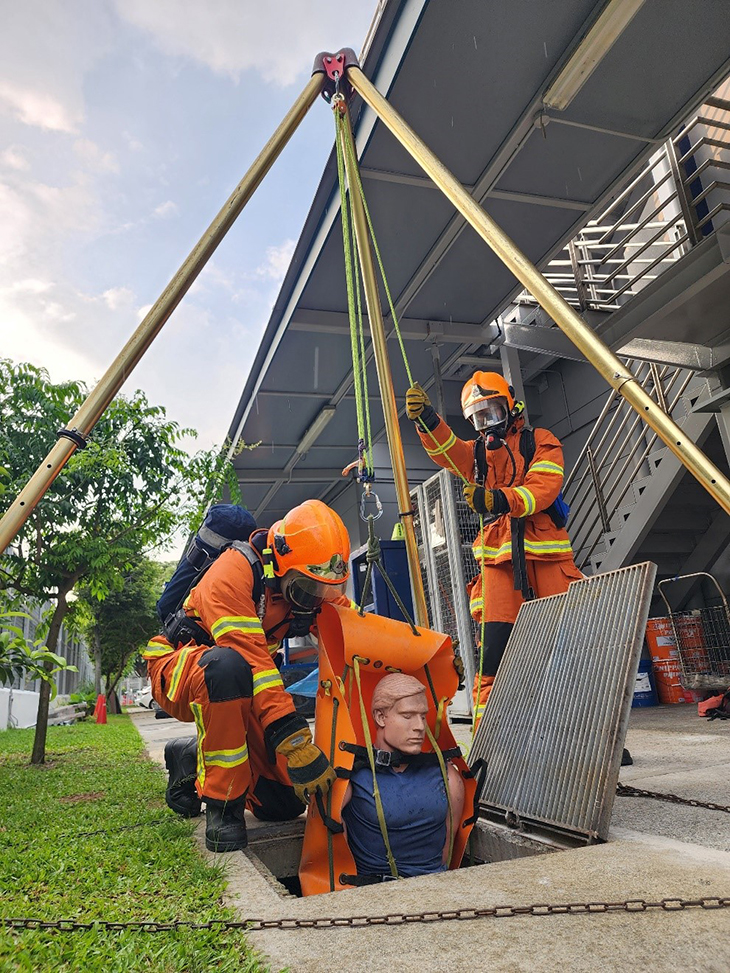
Officers working together to rescue the casualty. PHOTO:SCDF
The officers must work together to pull the rope attached to the pulley system while managing the casualty’s stability. Within minutes, the casualty was successfully extracted from the confined space and evacuated to the vessel’s main deck.
While it might seem easy for officers to carry out the drills, the training is far from effortless – the dummy weighs a whopping 85kg, excluding other equipment like the firefighting gear and breathing apparatus, which makes up about an additional 20kg that officers must carry on top of their body weight.
Height Rescue Drill
The element of height comes into play for rescues at sea involving large vessels such as tankers and container ships, because casualties need to be lowered from the distressed vessel onto SCDF’s rescue vessels, according to Warrant Officer (WO) Chan Kim Mun, Deputy Rota Commander in the West Coast Marine Fire Station.
WO Chan has been in the SCDF for 16 years and oversees officers throughout the drill to guide them, as well as ensure officers’ safety.
In the land-based simulation for height rescues, officers used the side of the five-storey fire station building. In this scenario, the casualty has been extracted from the confined space and brought up to the main deck of the affected vessel for lowering to the SCDF rescue vessel.
The first step was to transfer the casualty to a basket stretcher and to secure the casualty to it. Then, the officers attached the belay line (red) and the main line (blue) to a holder, known as an artificial height directional (AHD), affixed to the overhead i-beam of the building.
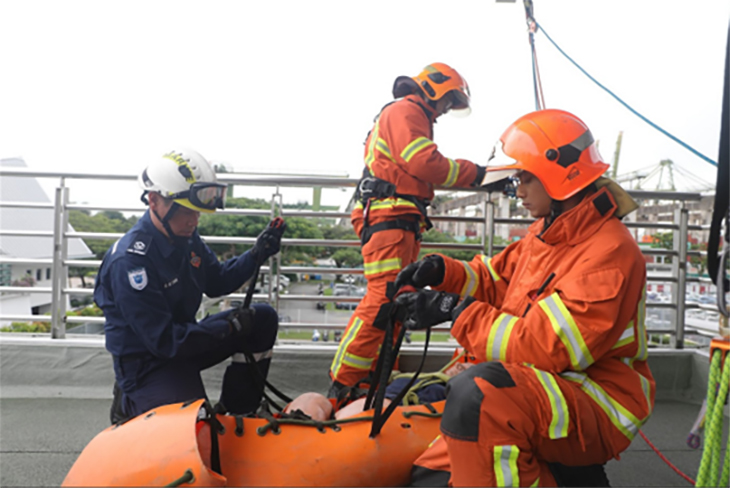
WO Chan (in blue) guiding an officer before the transfer of casualty. In the background, another officer with full body harness attached the lines to the AHD above him. PHOTO: Phoebe Leow
To ensure that the lines were not too tight and were able to release the casualty to the ground, the officers conducted a load test with the casualty.
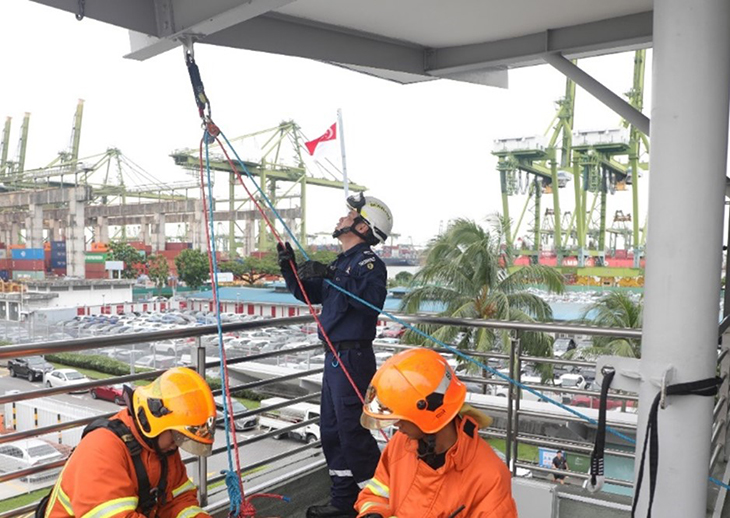
WO Chan checking the belay and main line before the load test. PHOTO: Phoebe Leow
Once all the checks were done, WO Chan signalled for officers to lower the casualty. He also alerted the officers to how much they have lowered the casualty or how far the casualty was from the ground, to ensure that everyone in the team knew what to do next.
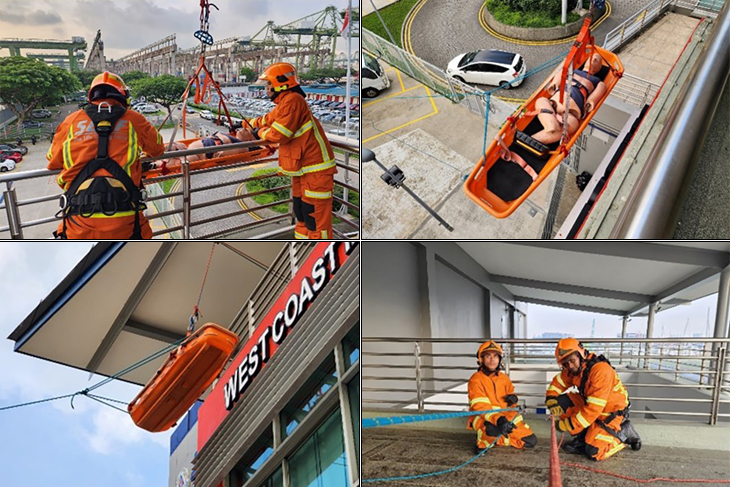
The casualty is being lowered. PHOTOS: SCDF
During a rescue incident when a distressed casualty is being lowered from the vessel, a Disaster Assistance and Rescue Team (DART) specialist will accompany the casualty to keep the casualty from panicking. This is important to ensure the safety and well-being of the casualty and a smooth and coordinated lowering process.
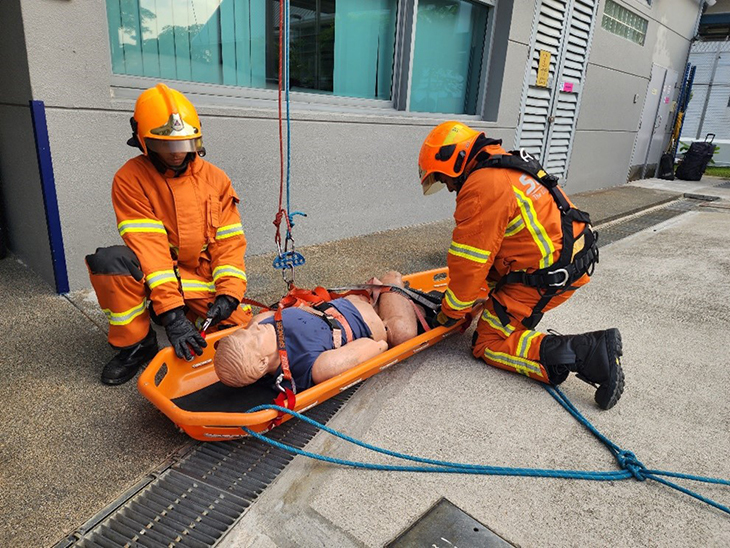
Officers removing the lines and preparing the casualty for transport. PHOTO: SCDF
After the casualty has been safely lowered on board the SCDF vessel, officers will continue to provide medical attention while transporting the casualty towards land, where he/she will then be transferred over to an ambulance for conveyance to the hospital.
Read Part 2.











